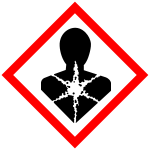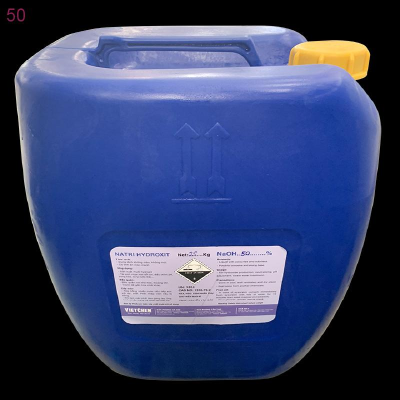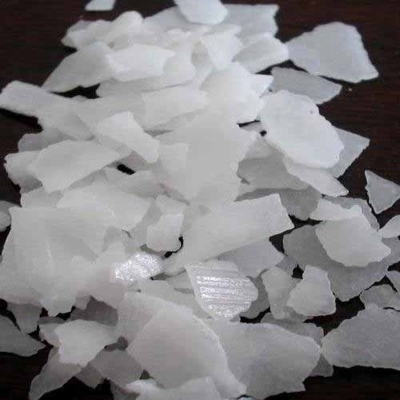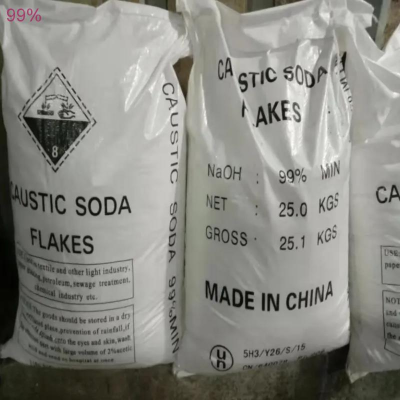

Glycidyl methacrylate
TDS 2 Inquiries
106-91-2
Top Product
98.5%
SHANGHAI
200kg/as customer's requirment
2023-10-21
HEA,EGDMA,SA,PFOEMA,GMA,LMA
-
Product Description
-
Seller Information
-
Inquiry History
-
DescriptionCertificatesBasic Info
-
Product Name:
Glycidyl methacrylate
Other Name:2-Propenoic acid,2-methyl-,2-oxiranylmethyl ester;Methacrylic acid,2,3-epoxypropyl ester;2-Propenoic acid,2-methyl-,oxiranylmethyl ester;Glycidyl α-methylacrylate;2,3-Epoxypropyl methacrylate;Glycidol methacrylate;Glycidyl methacrylate;Blemmer G;Epoxypropyl methacrylate;Acryester G;SY-Monomer G;Blemmer GMA;2-[(Methacryloyloxy)methyl]oxirane;Light Ester G;SR 379;Sartomer 379;(±)-Glycidyl methacrylate;Blemmer GP;3-Methacryloyloxy-1,2-epoxypropane;Blemmer GS;NSC 24156;NSC 67195;Methacryloyloxymethyloxirane;Blemmer GH-LC;2-Methylacrylic acid oxiranylmethyl ester;Sartomer SR 379;M 0590;Blemmer GH;Acryester GMA;Acryester GU;EM 54;Oxiran-2-ylmethyl methacrylate;2-Oxiranylmethyl 2-methylacrylate;H 299431;GMA 1618;55279-88-4;89678-75-1;96778-02-8;98104-93-9;117955-24-5;122785-80-2;126872-19-3;169957-95-3;201732-55-0;202149-12-0;203300-26-9;210093-72-4;865699-83-8;1451188-70-7
CAS No.:106-91-2
Molecular Formula:C7H10O3
InChIKeys:InChIKey=VOZRXNHHFUQHIL-UHFFFAOYSA-N
Molecular Weight:142.15200
Exact Mass:142.15
EC Number:203-441-9
ICSC Number:1679
NSC Number:67195|24156
UN Number:2810
DSSTox ID:DTXSID0025361
Color/Form:Colorless liquid
HScode:2916140000
Categories:
Characteristics-
PSA:
38.83000
XLogP3:0.8
Appearance:Glycidyl methacrylate is a colorless liquid with a fruity odor. Floats on water. (USCG, 1999)
Density:1 x 10-6 g/cm3 @ Temp: 25 °C
Melting Point:-52ºC
Boiling Point:189 °C
Flash Point:76ºC
Refractive Index:1.449-1.451
Water Solubility:H2O: 0.5-1.0 g/100 mL at 20 ºC
Storage Conditions:Refrigerator
Vapor Pressure:0.582mmHg at 25°C
Vapor Density:Relative vapour density (air = 1): 4.9
Odor:Fruity odor
Experimental Properties:Liquid water interfacial tension: (est) 40 dynes/cm= 0.04 N/m at 20 °C; Ratio of specific heats of vapor: (est) 1.043; Heat of polymerization: (est) -900 BTU/lb= -500 cal/g= -20X10+5 J/kg.|Liquid heat capacity: 0.426 BTU/lb-F @ 85 °F; Liquid thermal conductivity: 1.040 BTU-in/hr-sq ft-F at 70 °F; Ideal gas heat capacity: 0.336 BTU/lb-F @ 90 °F.
Air and Water Reactions:Flammable. Slightly water soluble.
Reactive Group:Epoxides
Reactivity Alerts:Polymerizable
Reactivity Profile:Epoxides, such as GLYCIDYL METHACRYLATE, are highly reactive. They polymerize in the presence of catalysts or when heated. These polymerization reactions can be violent. Compounds in this group react with acids, bases, and oxidizing and reducing agents. They react, possibly violently with water in the presence of acid and other catalysts.
Hazard IdentificationClassification of the substance or mixture
Acute toxicity - Category 4, Oral
Acute toxicity - Category 3, Dermal
Skin corrosion, Sub-category 1C
Serious eye damage, Category 1
Skin sensitization, Category 1
Specific target organ toxicity â single exposure, Category 3
Germ cell mutagenicity, Category 2
Carcinogenicity, Category 1B
Specific target organ toxicity â repeated exposure, Category 1
Reproductive toxicity, Category 1B
GHS label elements, including precautionary statements
Pictogram(s) 


Signal word Danger
Hazard statement(s) H302 Harmful if swallowed
H311 Toxic in contact with skin
H314 Causes severe skin burns and eye damage
H317 May cause an allergic skin reaction
H335 May cause respiratory irritation
H341 Suspected of causing genetic defects
H350 May cause cancer
H372 Causes damage to organs through prolonged or repeated exposure
Precautionary statement(s) Prevention P264 Wash ... thoroughly after handling.
P270 Do not eat, drink or smoke when using this product.
P280 Wear protective gloves/protective clothing/eye protection/face protection/hearing protection/...
P260 Do not breathe dust/fume/gas/mist/vapours/spray.
P261 Avoid breathing dust/fume/gas/mist/vapours/spray.
P272 Contaminated work clothing should not be allowed out of the workplace.
P271 Use only outdoors or in a well-ventilated area.
P203 Obtain, read and follow all safety instructions before use.
Response P301+P317 IF SWALLOWED: Get medical help.
P330 Rinse mouth.
P302+P352 IF ON SKIN: Wash with plenty of water/...
P316 Get emergency medical help immediately.
P321 Specific treatment (see ... on this label).
P361+P364 Take off immediately all contaminated clothing and wash it before reuse.
P301+P330+P331 IF SWALLOWED: Rinse mouth. Do NOT induce vomiting.
P363 Wash contaminated clothing before reuse.
P304+P340 IF INHALED: Remove person to fresh air and keep comfortable for breathing.
P305+P351+P338 IF IN EYES: Rinse cautiously with water for several minutes. Remove contact lenses, if present and easy to do. Continue rinsing.
P305+P354+P338 IF IN EYES: Immediately rinse with water for several minutes. Remove contact lenses, if present and easy to do. Continue rinsing.
P317 Get medical help.
P333+P317 If skin irritation or rash occurs: Get medical help.
P362+P364 Take off contaminated clothing and wash it before reuse.
P319 Get medical help if you feel unwell.
P318 IF exposed or concerned, get medical advice.
Storage P405 Store locked up.
P403+P233 Store in a well-ventilated place. Keep container tightly closed.
Disposal P501 Dispose of contents/container to an appropriate treatment and disposal facility in accordance with applicable laws and regulations, and product characteristics at time of disposal.
Other hazards which do not result in classification
no data available
Handling and StoragePrecautions for safe handling
NO open flames. Above 61°C use a closed system and ventilation. Handling in a well ventilated place. Wear suitable protective clothing. Avoid contact with skin and eyes. Avoid formation of dust and aerosols. Use non-sparking tools. Prevent fire caused by electrostatic discharge steam.
Conditions for safe storage, including any incompatibilities
Store only if stabilized. Cool. Well closed. Keep in the dark. Separated from strong oxidants, strong bases and strong acids. Separated from food and feedstuffs. Store in an area without drain or sewer access. Provision to contain effluent from fire extinguishing.Temp during storage must be kept low to minimize formation of peroxides and other oxidation products. ... Storage temp below 30 deg C are recommended for the polyfunctional methacrylates. ... The methacrylate monomers should not be stored for longer than one year. Shorter storage times are recommended for the aminomethacrylates, ie, three months, and the polyfunctional methacrylates, ie, six months. Many of these cmpd are sensitive to UV light and should, therefore, be stored in the dark. The methacrylic esters may be stored in mild steel, stainless steel, or aluminum. Methacrylic acid & derivatives
-
-
Seller Information
-
Business Type:
Manufactory
-
Main Products:
HEA,EGDMA,SA,PFOEMA,GMA,LMA
-
Location:
No.9, Lane 3599, Qixin road, Minhang district, Shanghai, China
-
Payment Terms:
100% TT in advance
-
Average lead Time:
15
-
Total Annual Revenue:
$25 million-$50 million
-
Total Employees:
101-200
-
Year of Establishment:
2006
-
-
Inquiry History2 Inquiries
Country Product Purchase Quantity Date Posted  Vietnam
Vietnam
Glycidyl methacrylate
20.00 KG Nov 24, 2023  China
China
glycidyl methacrylate
60 MT Jan 24, 2024 Post an enquiry for this product
Hot Related Products
-
![Sodium hydroxide 99% / alkali caustic soda pearls or flakes / 50% naoh liquid 50% white flake/ powder NaOH jtl Sodium hydroxide 99% / alkali caustic soda pearls or flakes / 50% naoh liquid 50% white flake/ powder NaOH jtl]() Sodium hydroxide 99% / alkali caustic soda pearls or flakes / 50% naoh liquid 50% white flake/ powder NaOH jtl
Sodium hydroxide 99% / alkali caustic soda pearls or flakes / 50% naoh liquid 50% white flake/ powder NaOH jtl -
![Sodium Hydroxide 50% Liquid Vietchem Vietchem Sodium Hydroxide 50% Liquid Vietchem Vietchem]() Sodium Hydroxide 50% Liquid Vietchem Vietchem
Sodium Hydroxide 50% Liquid Vietchem Vietchem -
![Caustic Soda Flakes White Caustic Soda Flakes White]() Caustic Soda Flakes White
Caustic Soda Flakes White -
![Caustic Soda 98% flake Caustic Soda 98% flake]() Caustic Soda 98% flake
Caustic Soda 98% flake -
![Caustic Soda Flakes/Pearls 99% - CAS 1310-73-2 Caustic Soda Flakes/Pearls 99% - CAS 1310-73-2]() Caustic Soda Flakes/Pearls 99% - CAS 1310-73-2
Caustic Soda Flakes/Pearls 99% - CAS 1310-73-2 -
![Caustic soda flakes & pearls 99% white flakes or pearls Caustic soda flakes & pearls 99% white flakes or pearls]() Caustic soda flakes & pearls 99% white flakes or pearls
Caustic soda flakes & pearls 99% white flakes or pearls













